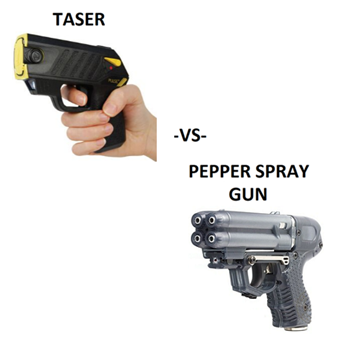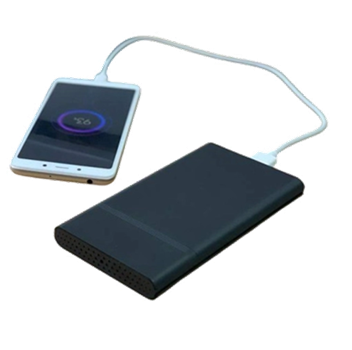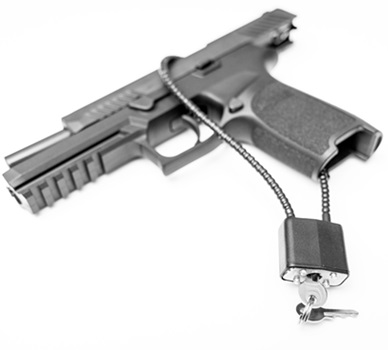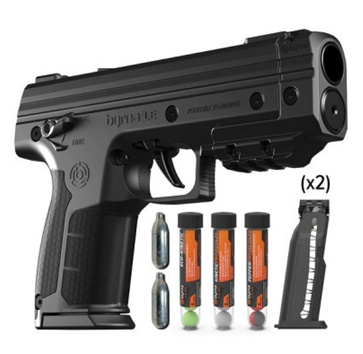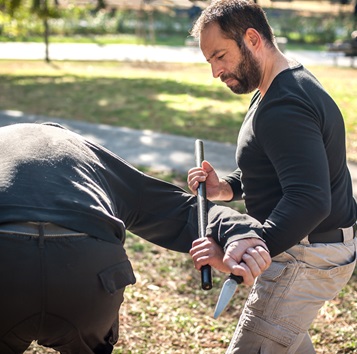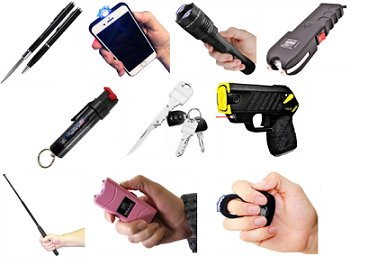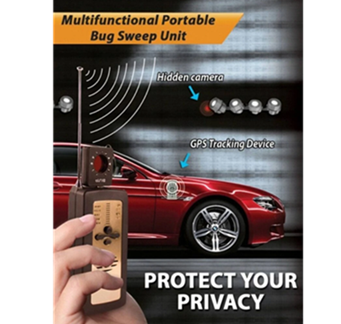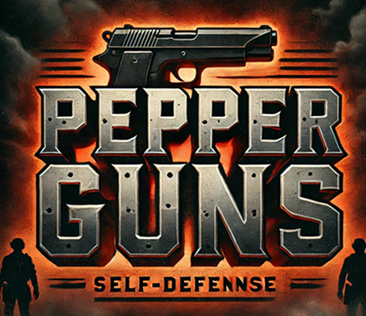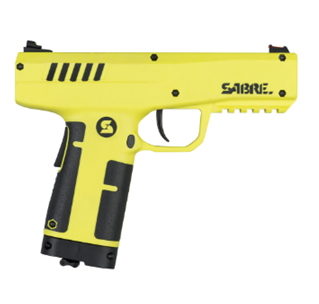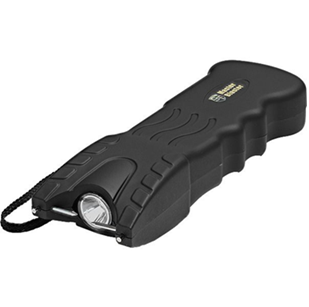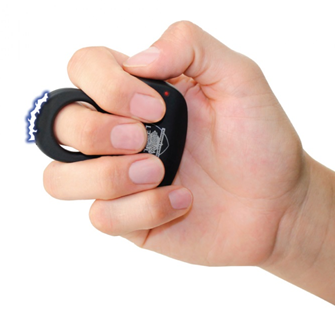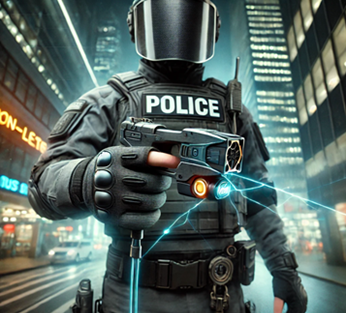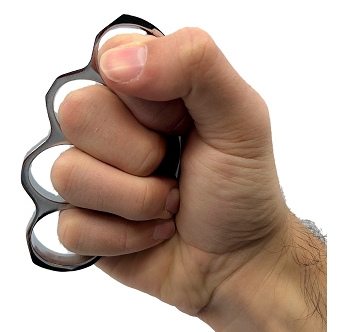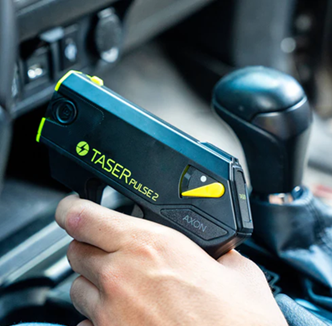Pepper Guns Myths and Facts: Separating Truth from Fiction
 When it comes to personal safety, many people turn to non-lethal weapons as a means of protection. One of the most widely debated tools in the world of self-defense is the pepper gun, a device designed to disperse pepper spray at a target to incapacitate an attacker. But while these weapons are often praised for their effectiveness, there are also several myths surrounding them that can create confusion for people looking to protect themselves.
When it comes to personal safety, many people turn to non-lethal weapons as a means of protection. One of the most widely debated tools in the world of self-defense is the pepper gun, a device designed to disperse pepper spray at a target to incapacitate an attacker. But while these weapons are often praised for their effectiveness, there are also several myths surrounding them that can create confusion for people looking to protect themselves.
In this post, we will dissect the most common myths about pepper guns and counter them with the facts, providing you with a clearer understanding of how these devices work and how they can be safely and effectively used for self-defense.
What is a Pepper Gun?
Before we dive into the myths and facts, it's important to first understand what a pepper gun is and how it works.
A pepper gun is a non-lethal self-defense weapon that uses a canister of oleoresin capsicum (OC), commonly known as pepper spray, which is a concentrated solution made from chili peppers. When fired, the pepper gun releases a powerful burst of pepper spray in the direction of the target, which causes an intense burning sensation in the eyes, skin, and respiratory system. This typically incapacitates the target for several minutes, giving the user time to escape from a dangerous situation.
Pepper guns often resemble small firearms, with a trigger that activates the release of the spray. These devices are designed to be used at a distance—usually 10 to 20 feet—and are seen as a more accurate and controllable alternative to traditional handheld pepper spray cans.
The Myth vs. The Facts: Pepper Guns Explained
Now that we have a basic understanding of what a pepper gun is, let's separate the myths from the facts.
Myth #1: Pepper Guns Are Just Like Real Guns
Fact: While pepper guns may resemble real firearms in shape and design, they are not firearms. Pepper guns are designed specifically for non-lethal self-defense, and they operate by using compressed air or gas to propel a canister of pepper spray toward a target. There is no bullet involved, and there is no risk of a firearm-related injury.
Unlike real guns, pepper guns do not cause any permanent damage. They are simply tools to incapacitate an attacker temporarily. While they may look intimidating to some, their primary purpose is to disable and allow the user to escape. The resemblance to a firearm is largely cosmetic, meant to make the device easier to handle for those who are familiar with guns.
Myth #2: Pepper Guns Are Inaccurate and Unreliable
Fact: One of the major advantages of a pepper gun over traditional pepper spray is its accuracy. Unlike aerosol-based pepper spray, which can be difficult to aim properly, pepper guns allow for targeted delivery of the spray.
Most modern pepper guns are designed to be easy to aim and control. The built-in sights help the user aim precisely, and the trigger mechanism makes it possible to deliver a concentrated burst of spray at a specific target. The range of pepper guns varies, but many can shoot accurately up to 10 to 20 feet, which is sufficient for most self-defense situations.
Moreover, pepper guns are generally reliable when maintained properly. The spray canisters are designed to last for a long time, and many devices are easy to reload. In comparison to traditional pepper spray, which can leak or malfunction, a pepper gun provides a more consistent and reliable option for self-defense.
Myth #3: Pepper Guns Are Only Effective at Close Range
Fact: While it’s true that pepper spray loses potency as it travels through the air, pepper guns are designed to maintain their effectiveness even at longer ranges. Most pepper guns are capable of firing the pepper spray accurately at distances of 10 to 20 feet, which is more than enough for most self-defense situations.
The ability to use a pepper gun at a distance gives users a significant advantage over a traditional spray canister. In many situations, being able to maintain a safe distance from an attacker is crucial for avoiding injury or harm. Pepper guns offer improved range and control compared to handheld pepper spray, allowing individuals to incapacitate an attacker before they get too close.
Myth #4: Pepper Guns Can Only Be Used by Law Enforcement
Fact: Another common misconception about pepper guns is that they are intended solely for law enforcement or military use. While it is true that pepper spray has long been a staple of law enforcement self-defense tools, pepper guns are available to the general public and can be used by anyone seeking non-lethal means of protection.
Pepper guns are legally available in many areas, and they are often sold as self-defense tools for civilians. In fact, many people use them as a safer and more effective alternative to firearms or traditional pepper spray. As long as the user is following local laws and regulations, there is no restriction on who can purchase or use a pepper gun.
Myth #5: Pepper Guns Are Too Expensive for the Average Person
Fact: When pepper guns first came onto the market, they may have been considered expensive. However, as the technology has advanced, the price of these devices has become much more accessible to the average consumer. Today, pepper guns are priced similarly to high-quality pepper spray canisters or stun guns, and many models are available for less than $100.
While there are certainly high-end models with additional features, there are also budget-friendly options for those looking for a reliable self-defense tool without breaking the bank. Additionally, the effectiveness and reusability of pepper guns make them a worthy investment in personal safety.
Myth #6: Pepper Guns Only Work on People, Not Animals
Fact: While pepper guns are commonly used as self-defense tools against human attackers, they can also be effective against aggressive animals. In fact, some models are specifically designed for animal control, with pepper spray canisters formulated to deter both people and animals.
Pepper spray is often used in situations involving aggressive dogs, wild animals, or other potentially dangerous creatures. The burning and irritating effects of the spray can incapacitate an animal temporarily, allowing you to escape an attack or call for help. When used correctly, a pepper gun can be a versatile tool in a variety of threatening situations.
Myth #7: Pepper Guns Are Easy to Use
Fact: While pepper guns are generally user-friendly, it’s important to note that, like any self-defense tool, they require proper training and practice to be used effectively. Many people assume that simply owning a pepper gun means they will be able to use it correctly in an emergency, but that is not always the case.
To maximize the effectiveness of a pepper gun, users should familiarize themselves with the device, practice aiming and shooting, and understand the range and power of their specific model. Additionally, knowing when to use the pepper gun and how to aim under pressure is key. Training—whether through professional classes or regular practice—can significantly improve the chances of successfully using a pepper gun in a threatening situation.
Myth #8: The Effects of Pepper Spray Are Permanent
Fact: One of the most persistent myths about pepper spray (and pepper guns) is that the effects are permanent. This is simply not true. While the effects of pepper spray can be extremely painful and incapacitating, they are temporary and usually wear off within 20 to 30 minutes.
The pain, burning sensation, and difficulty breathing caused by the pepper spray can be intense, but they are not long-lasting. The target may experience discomfort for several hours, but the effects will eventually subside. In rare cases, more severe reactions may occur, particularly for people with preexisting health conditions, but these instances are not typical.
Myth #9: Pepper Guns Are Ineffective Against Highly Aggressive Attackers
Fact: Pepper guns are effective in most situations, even against individuals who are highly aggressive or under the influence of drugs or alcohol. While it is true that some people may have a higher pain tolerance or may be less affected by pepper spray, it is still highly likely that the intense irritation caused by the pepper spray will incapacitate them temporarily, giving the user time to escape.
In most cases, the effects of the spray—such as impaired vision, difficulty breathing, and burning sensations—will create enough of an advantage for the person using the pepper gun to get away. It's important to understand that pepper spray is not intended to permanently disable an attacker but to give the user time to flee to safety.
Conclusion: Separating Fact from Fiction
When it comes to pepper guns, there are many misconceptions that can cloud your understanding of how these tools work. However, as we have seen, pepper guns are a reliable, effective, and accessible form of non-lethal self-defense that can be used in a variety of situations. By separating the myths from the facts, we can better understand their capabilities and limitations.
Pepper guns offer an improved alternative to traditional pepper spray, with better accuracy, range, and control. While they are not a magic solution to every self-defense situation, they are an excellent tool for incapacitating an attacker and giving you the chance to escape to safety. With proper training, regular practice, and an understanding of how to use them, pepper guns can be a powerful addition to your self-defense toolkit.
If you're looking for a way to protect yourself without resorting to deadly force, a pepper gun could be the answer. Just be sure to separate the truth from the myths and always stay informed about your legal rights and responsibilities when carrying such a device.
This blog post should provide a thorough exploration of the most common myths and facts about pepper guns, helping readers make informed decisions about their self-defense options.
See cost of pepper guns
Company Info
Customer Service
Product Information
- TASER® and Stun Devices Regulations by State
- TASER® Safe Escape Product Replacement Guarantee
- TASER® Comparison Chart
- TASER® User Manuals
- TASER® Warranty Info
- Byrna Product Catalog
- PepperBall Manuals & Spec Sheets
- Pepper Spray Laws
- Air Gun Laws
- States that Restrict Automatic and Butterfly Knives
- Our Print Catalog


























